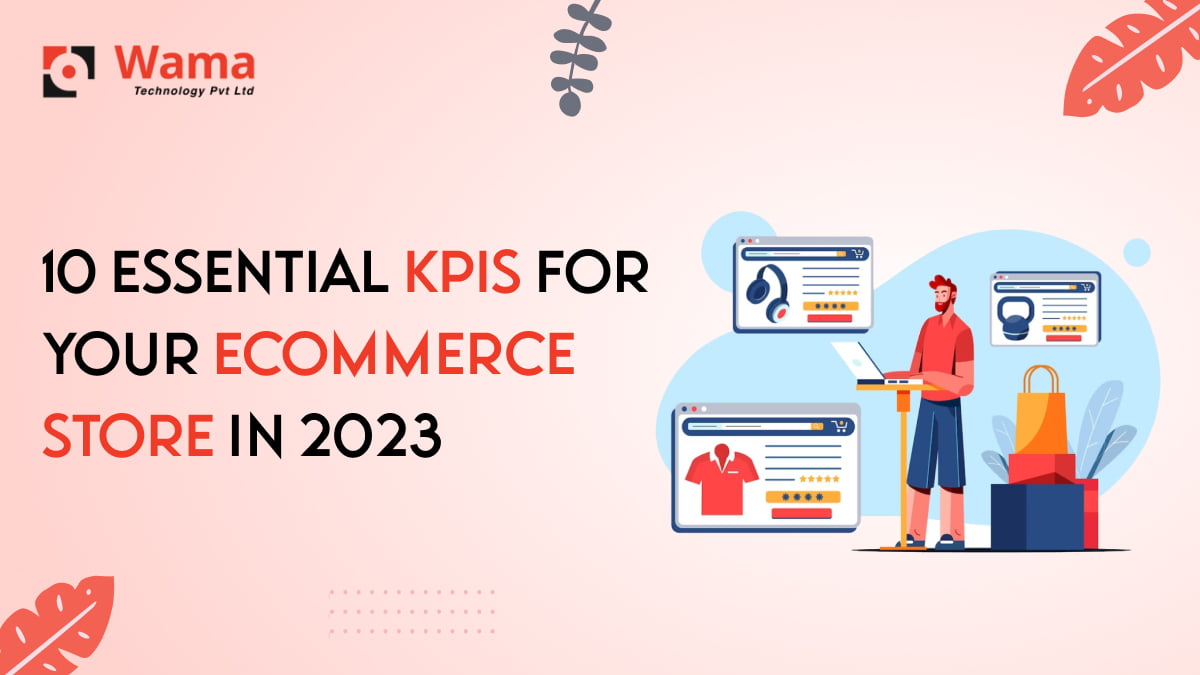Any e-commerce enterprise worth its salt should strive for exponential expansion. A crucial first step to success is understanding how well you’re doing. You should continually assess how well your business is doing. It can help you spot your company’s advantages and disadvantages before problems arise.
It would be best if you had key performance indicators (KPIs) to assess the performance of your e-commerce business. It would be best to keep it in mind during the e commerce website designing. By tracking and analysing these KPIs, you can more effectively plan for the future and take decisive action towards your most important goals. Read on to find the KPI and list the top 10 KPIs essential for e-commerce sites.
What is E-commerce KPIs?
A company’s key performance indicators (KPIs) measure its performance in relation to its stated goals and objectives. Although some key performance indicators (KPIs) are relevant across industries, the choice ultimately rests with the individual company. Metrics will best guide their product, service, and customer engagement efforts. It shows your current position and how to reach your goals. The e commerce development company can teach you about your website’s KPIs.
What are the most vital key performance indicators (KPIs)?
This article has compiled a list of the top 10 KPIs you should monitor to increase your business’s revenue and flourish this year.
- Website sessions:
An essential metric for gauging your company’s reach is the number of unique visitors to your website, also known as the number of website sessions. Finding out where your visitors are coming from (paid, social, or referrals) is just as valuable as finding out how many there are because it provides concrete evidence of your website’s scalability.
- Conversion rate:
The percentage of people who take an intended action due to your efforts is known as the conversion rate. A conversion can be anything from a click on an ad to a visit to a landing page to a newsletter subscription to a purchase or form submission, depending on your company’s goals. The term “conversion” refers to a simple action at each stage of the funnel of ecommerce development.
- Advertising budget:
The Ad Spend is a metric that measures the overall cost of advertising across all channels. This KPI is crucial for comprehending the spending patterns of your organisation. In addition, it is a metric that factors into the Return on Ad Spend (ROAS), which helps determine the efficacy of particular investments in promotional activities.
- Ads with the highest ROI:
Return on ad spend measures how much money you make from your advertising efforts. This metric is useful for determining which ads are producing the best results in paid marketing campaigns. ROAS can be calculated on either a per-ad or per-campaign basis, depending on the scope of your marketing efforts.
- Quantity of acceptable orders:
Ordinarily, an order is considered valid until it is later found invalid due to cancellation, fraud, or lack of value (for example, when paid for with a gift card). AOV, CLV, and Number of Purchases per Customer depend on the Number of Valid Orders.
- Customer acquisition cost (CAC):
To determine the Acquisition Cost or Customer Acquisition Cost, if you prefer, add up all of the money spent on acquiring new customers (including things like advertising) and divide that amount by the overall number of clients gained over that time.. This KPI will reveal whether or not your advertising is successfully converting leads into paying customers.
- Customer lifetime value (CLV):
An individual’s predicted lifetime value (CLV) as a customer of your store’s goods and services. This metric is typically calculated using the typical customer retention rate or at regular intervals (1 year, two years, etc.). By watching the difference between CAC and CLV, you can make smarter choices about your marketing budget. In addition, knowing the characteristics of your biggest spenders is a key step towards successfully segmenting your customer base for customer acquisition and retention initiatives.
- Average order value (AOV):
This metric keeps tabs on the general trend of the total value of all Valid Orders. It’s a useful indicator of customer behaviour that can tell you whether they tend to make small or large purchases. It advises you to examine AOV by customer acquisition source and customer demographics to learn useful information. Last but not least, this metric directly impacts revenue, making it crucial to track since increasing the average order value increases revenue.
- Rate of return (ROR):
To calculate the rate of return, subtract the number of returned products from the total number of products ordered. Return rates can be higher (in the apparel industry, for instance) or lower (in the healthcare industry). However, a high return rate should not negatively impact the customer experience if the right return policy is in place. It is easy to increase the usefulness of this metric by fixing the root cause of returns, like revising the sizing chart or improving the quality of product photos with the help of an ecommerce developer.
- Quickness of order fulfilment:
The time from order placement to shipment is represented here. Shipping delays, stock running low, unnecessary red tape, incorrect address shipments, and lengthy order processing protocols play a role. A stable workflow and a fantastic order automation tool are effective ways to increase the value of this indicator in light of all these unforeseen bottlenecks. A good ecommerce web design is necessary to improve the quickness of order fulfilment.
Conclusion
A useful benchmark for determining how close your business is to its long-term goals is the use of key performance indicators (KPIs). In the long run, you can see how your business is doing regarding finances and risk. Monitoring key performance indicators will help your e-commerce business perform better and position you for long-term success. Consequently, Wama Technology, the ecommerce website development services provider, is available to provide information about key performance indicators for e-commerce sites. For further information, please get in touch with them.
